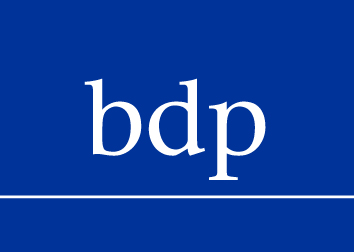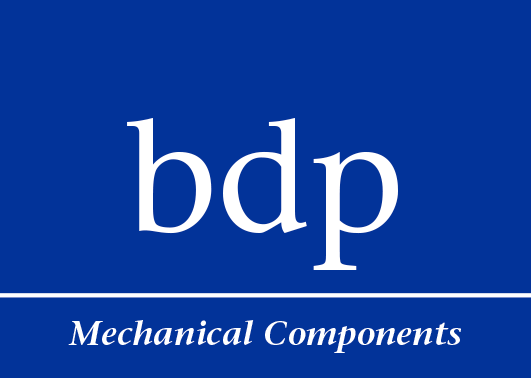Newsletter December 2021:
By: Chuanying Cui
Translated by: Xiuguo Dong
bdp MC advices for the management of Chinese suppliers to continuously improve their performance
In international supply chains, where customers and suppliers are in different countries, it is crucial to have open and intensive communication with suppliers. Especially for customers in Europe with suppliers in China, where the geographic and cultural differences can be huge, risks caused by non-transparency are intense. A close relationship with the supplier is key to ensuring smooth production and stable quality. With the experience of bdp Mechanical Components (bdp MC) in international procurement since 1982, we would like to give you the following seven points as recommendations for supplier management.
1. Long-term contracts to promote mutual trust:
Due to the economic and technological development in China, e-commerce has become more successful in recent years, and dependence on foreign trade is declining. This leads to a change in the relationship between customers abroad and local suppliers: the interest of suppliers in individual short-term projects has declined. The result is a frequent change of suppliers. A long-term cooperation agreement with suppliers will increase the trust between both parties.
Practice experience of bdp MC: For a Spanish customer in the machinery industry we are delivering diverse kinds of products. There is a wide variety of product types. With tight communication with the customer and the producer, we could ensure that the producer has the right guidelines to produce this wide variety according to the customer’s requirements. bdp was able to build up long-term cooperation with this producer and has been supplying these parts for 20 years.
2. Regular on-site visits
For mechanical components, suppliers are responsible for the entire process of prototyping and manufacturing, so customer’s technical engineers and quality engineers shall be regularly on-site to monitor the status of each process and identify problems in time to prevent major problems that could lead to prototype failures or delivery delays, especially for important processes such as mold making, casting, and process monitoring.
Practice experience of bdp MC: For a German customer, we are delivering safety-relevant valve components. To ensure tightness, the requirements for dimensional accuracy are even more strict than in the automotive industry. The producer is located in China. During the entire development and subsequent production phase, our colleagues in China in Purchasing and QA are at the producer plant on a weekly basis to ensure that customer’s requirements are understood by the producer and that appropriate implementations are carried out in production. It was also a matter of communicating suggestions and questions from the producer to the customer, so that a suitable solution could be found together. Currently, we supply to this customer in serial production. The customer has expressed his confidence in us and, in the meantime, placed further production orders with us.
3. Clearly and directly point out errors or shortcomings of the supplier
It is important to clearly and affirmatively point out any errors or shortcomings of the supplier. During communication, ambiguous expressions and terms should be avoided to prevent unnecessary misunderstandings.
Practice experience of bdp MC: In a project for a Spanish customer, we are delivering several types of valve components. After understanding the customer’s demand urgency, we communicated with the supplier the development and delivery schedule, tracked the development schedule and project progress accordingly every week, from placing orders, project development summary, order consolidation, production monitoring, inspection monitoring, to packaging and shipping, etc. Through careful control, we were able to ensure that the customer did not have to face any defects or errors.
4. Finding root causes together with the suppliers
Due to the differences in nationalities, cultures, regions, and customs, the management structure of Chinese suppliers varies greatly. It is necessary to hold quality analysis meetings with the management, technicians, operators, and field quality inspectors of the suppliers, listen carefully and screen the authenticity of the information from the suppliers, and then combine it with personal analysis and judgment at the production site in order to quickly and accurately find out the real causes of defective products.
Practice experience of bdp MC: As we sourced for a valve component, the selected producer, with whose offer we were nominated by the customer, had insufficient experience with similar parts, despite his excellent technical skills. And although he eventually succeeded in developing this component, the process of approval during product development took a very long time. Since our producer also outsourced the molds and the subcontractor was not well introduced to our project, the accuracy of the molds could not meet the product requirements at first. At the product release stage, the molds were not accurate enough, resulting in several mold modifications that were time-consuming and costly. Through more intensive supplier management and communication with the customer, we were able to overcome these difficulties. Currently, we are delivering this component in series to the customer and have gained firm trust from the customer.
5. Developing suitable solutions with the supplier
Sometimes it is obvious and straightforward to find a solution. However, different factors need to be considered, such as equipment, cost, delivery time, the technical level of the factory and the operator’s habits. The decision-maker of the supplier has to consider all these factors to find a suitable solution that is acceptable to all parties.
Practice experience of bdp MC: In a project for a German customer in the automotive industry, after communicating with the direct customer, we conducted short-term 20MnCr5 material switching and the subsequent 20MnCrS5 procurement plan and met the customer production line’s urgent needs. Currently, the project entered a stable stage of regular batch supply.
6. Supervise the implementation and analysis of the effectiveness of the improvement program
Once the optimization plan has been finalized, all relevant documents need to be submitted and approved by the customer according to ISO 9001 or IATF 16949 procedures.
Practice experience of bdp MC: We work with the producers to consolidate, analyze and collect all results and required documents, so our customers only need to check the final results. We work according to ISO 9001, IATF 16949, or any related standards.
7. Training for supplier’s project team
Regular or occasional training should be tailored to different projects and different levels of suppliers. For example, specialized training for specific products and quality control training for inconsistent quality is essential.
Practice experience of bdp MC: In a project for a German customer in the automotive industry, we spent much time training and upgrading the producer, including change management, traceability management, PPAP process training, production control, and personnel training. This enabled us to help the customer achieve a cost advantage. We are currently in series production and delivery to the customer on a regular basis.



